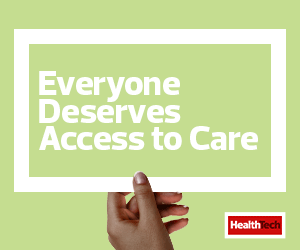Payers, Startups, Retail and Tech Giants
As patients expect more personalized care and healthcare organizations aim to deliver a connected continuum of care, a hybrid model with a virtual-first touchpoint will be a standard approach sought by payers, providers and digital health companies.
“There used to be this notion that telehealth is transactional; it's for things like urgent care, where I don’t need to know who the person on the other end of the call or the screen is, I just have a specific, short need to get help,” Sam Holliday, CEO of virtual-first gastrointestinal specialty care provider Oshi Health, told HealthTech in December. “I think the biggest shift that’s occurred is people realize you can actually do relationship-based ongoing care through telehealth. That shift now has made consumers more comfortable with telehealth, providers are more comfortable, and it’s created a whole set of companies that are redesigning their care, saying it should all be telehealth first for the things where that’s appropriate.”
The organizations that will find success are the ones that are able to frictionlessly move patients through the right modality of care — for example, starting with a video visit but then escalating to an in-person visit when it’s clear that’s what the patient needs.
EXPLORE: Emerging use cases and evolving compliance concerns for Zoom.
Payers have kept a finger on the pulse of virtual care for years now. In 2019, UnitedHealth Group’s Optum division acquired remote patient monitoring startup Vivify. And last year, payers began rolling out virtual-first health plans in earnest, from Oscar Insurance’s virtual primary care to UnitedHealth Group’s NavigateNOW plan. Anthem began expanding its virtual care offerings earlier this year.
Over the past two years, telehealth companies such as Teladoc Health Doctor on Demand and Amwell have each expanded their reach in digital health through mergers and acquisitions. Tech and retail giants have also entered the arena in a major way, with Aetna Virtual Primary Care through CVS Health; Walmart’s acquisition of telehealth company MeMD; and the nationwide launch of Amazon’s telehealth service, Amazon Care.
These companies, along with payers, are bringing new care models to the marketplace at a much faster pace than traditional providers. For those providers, while the evolving landscape for virtual care may seem daunting, it doesn’t necessarily have to be a zero-sum game.
Traditional providers may find opportunities to locally partner with companies and build out a robust hybrid care model to ensure their network integrity. For example, Cleveland Clinic and Amwell partnered to launch a digital health offering called The Clinic by Cleveland Clinic, where patients can access virtual care.
Click the banner below to achieve an end-to-end virtual care solution with guidance from CDW.














